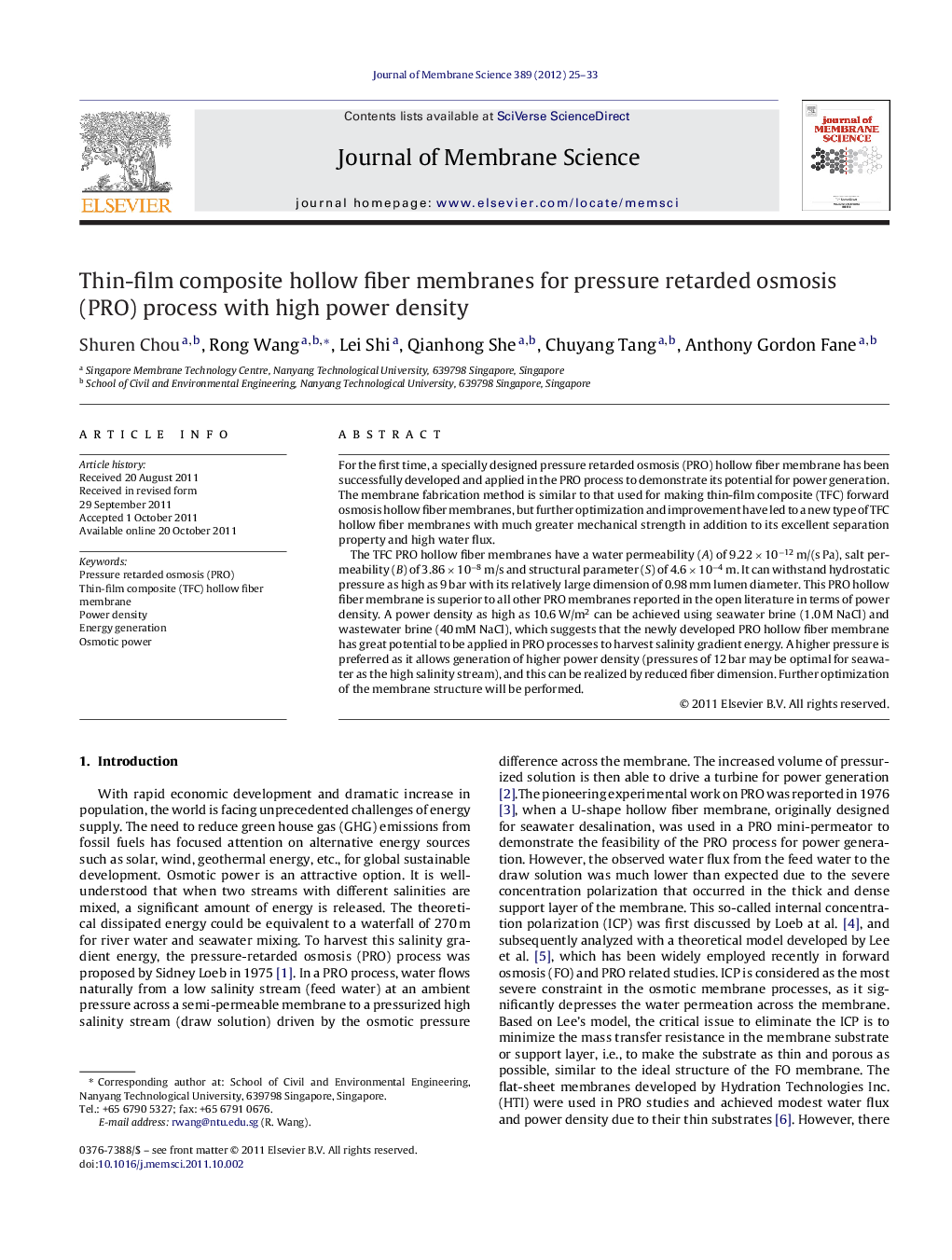| Article ID | Journal | Published Year | Pages | File Type |
|---|---|---|---|---|
| 635246 | Journal of Membrane Science | 2012 | 9 Pages |
For the first time, a specially designed pressure retarded osmosis (PRO) hollow fiber membrane has been successfully developed and applied in the PRO process to demonstrate its potential for power generation. The membrane fabrication method is similar to that used for making thin-film composite (TFC) forward osmosis hollow fiber membranes, but further optimization and improvement have led to a new type of TFC hollow fiber membranes with much greater mechanical strength in addition to its excellent separation property and high water flux.The TFC PRO hollow fiber membranes have a water permeability (A) of 9.22 × 10−12 m/(s Pa), salt permeability (B) of 3.86 × 10−8 m/s and structural parameter (S) of 4.6 × 10−4 m. It can withstand hydrostatic pressure as high as 9 bar with its relatively large dimension of 0.98 mm lumen diameter. This PRO hollow fiber membrane is superior to all other PRO membranes reported in the open literature in terms of power density. A power density as high as 10.6 W/m2 can be achieved using seawater brine (1.0 M NaCl) and wastewater brine (40 mM NaCl), which suggests that the newly developed PRO hollow fiber membrane has great potential to be applied in PRO processes to harvest salinity gradient energy. A higher pressure is preferred as it allows generation of higher power density (pressures of 12 bar may be optimal for seawater as the high salinity stream), and this can be realized by reduced fiber dimension. Further optimization of the membrane structure will be performed.
► For the first time, a specially designed PRO TFC hollow fiber has been developed. ► It can hold up as high as 9 bar hydrostatic pressure with 0.98 mm inner diameter. ► A power density of 10.6 W/m2 can be achieved using seawater and wastewater brines. ► This hollow fiber has great potential for PRO to harvest salinity gradient energy.
